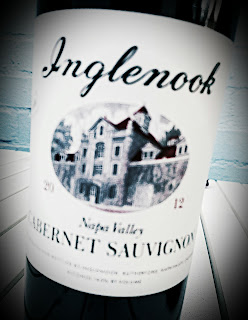The
Tam O'Shanter bills itself as Los Angeles' oldest restaurant operated by the same family in the same location. It's a member of the Lawry's family of restaurants and a mainstay on Los Feliz Boulevard. If you have some Scottish ancestry, you may find your family tartan among the extensive collection that decorate the walls. I know a guy who likes the Welsh rarebit there, and my wife loves the Scotch whisky display case.
The Tam once again provided a holiday feast filled with special menus and Dickens-style entertainment. The legendary Dickens Dinner experience just wrapped up its 33rd year. The three-hour experience books only 60 people per performance, so you don't feel crowded while enjoying the live, interactive dinner theatre that features an acting troupe performing a consolidation of Dickens' "A Christmas Carol."
To go along with the show, the Tam's Executive Chef offered the following menu items:
Starter
Holiday salad with mixed market greens, candied walnuts, blue cheese, cranberry vinaigrette.
Entrees
Roasted Prime Ribs of Beef 6oz. cut, mashed potatoes, creamed spinach, Yorkshire pudding, horseradish;
or
English-Style Goose mashed potatoes, traditional stuffing, sautéed vegetables, sage gravy;
or
Pan Roasted Scottish Salmon parsnip puree, fennel, kale, pearl onions, pomegranate seeds;
or
Vegetarian Entrée.
Dessert
Sticky Toffee Pudding
Seasonal Cocktails
Maple Old Fashion
Elijah Craig, Whistle Pig bourbon barrel maple syrup, black walnut bitters
Scotch Lodge
Highland Park, Cynar, cherry herring, orange bitters
Irish Goodbye
Irish whisky, amaro, Lillet blanc
Tam's Toddy
Applejack, chamomile liquor, demerra, bitters
Autumn Negroni
gin, Cynar, sweet vermouth
The show is fantastic and the actors are very involved with the audience. The food service is even incorporated as part of the act. They've been putting on this show at the Tam O'Shanter for longer than I've been living in Los Angeles, and I couldn’t believe I had never experienced it. It will be a part of my future holiday plans each year.
Tam O'Shanter General Manager John Lindquist says the Dickens Dinner is like "travelling through time," and he’s right. It's a truly unique experience in a city that sometimes seems to be bursting at the seams with uniqueness. L.A. as a Victorian holiday wonderland? Please, suh, may I have anuthah?
By the way, Scotch lovers may want to look at Tam O'Shanter's unique "Scotch Passport," which gives "explorers" access to one of the most extensive Scotch collections in the U.S.
Follow Randy Fuller on Twitter





